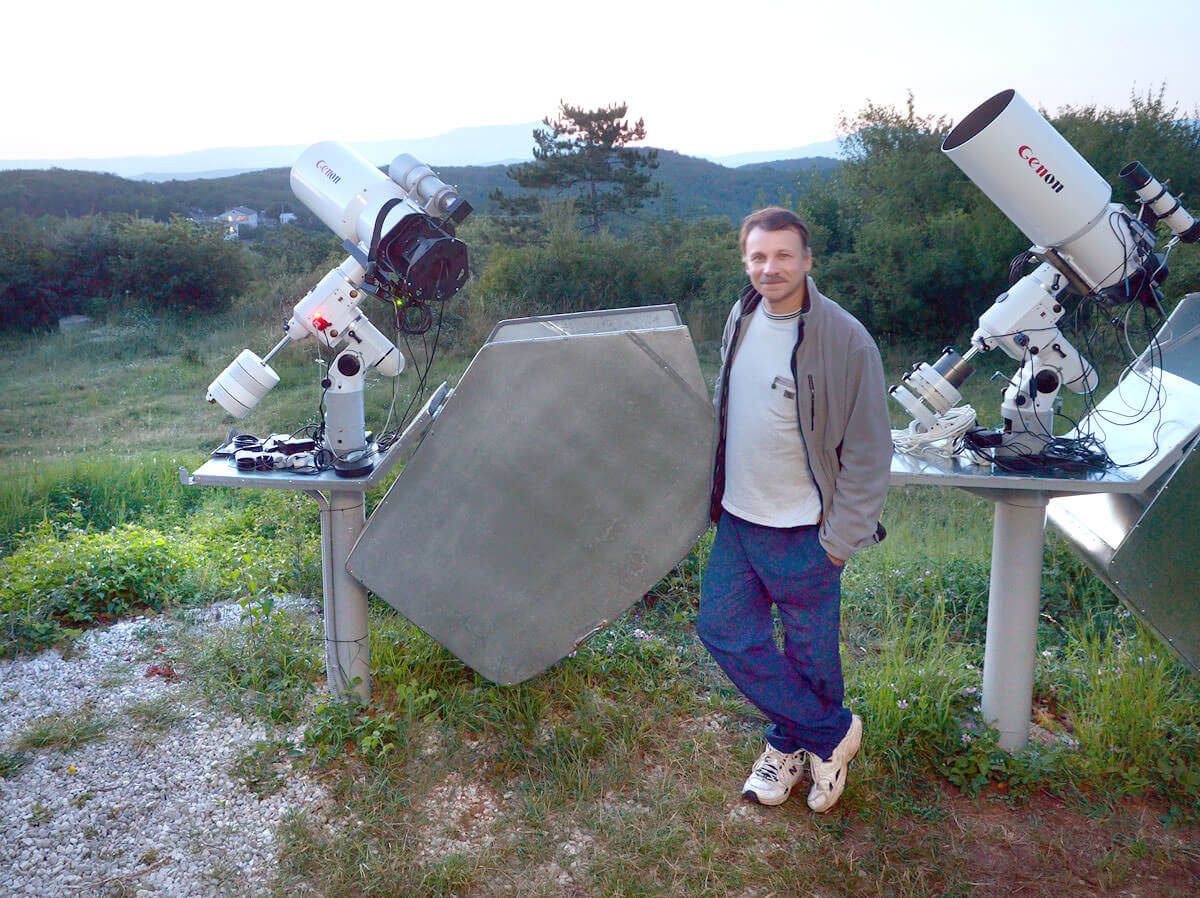2i/ Borisov; the new mysterious interstellar object!
Reflections on the Future: Space Comets and Our Ongoing Exploration
Video of the day october 31st 2019
What is 2i/Borisov?
Despite its fancy name, there is a very simple explanation for what 2i/Borisov is…it’s a comet. I know on the surface of things that doesn’t sound very impressive, “Why should we care about a comet?” But the real thing here isn’t that it’s a comet, it’s that 2i/Borisov is a comet that comes from outside our solar system and is now here. That makes it an Interstellar Comet, which is actually rather rare in our part of the galaxy. In fact, it’s only the second comet that has done that after the weird object known as Oumuamua.
On October 12th, 2019, the Hubble Space Telescope was able to get some photos of 2i/Borisov, and wit it came confirmation as to what it was, and how it was different from Oumuamua.
“Whereas ‘Oumuamua appeared to be a rock, Borisov is really active, more like a normal comet. It’s a puzzle why these two are so different,” said David Jewitt of the University of California, Los Angeles (UCLA), leader of the Hubble team who observed the comet.
Obviously, 2i/Borisov is special because it doesn’t come from our system, but there’s more to it than that that scientists find interesting. Mainly, this is an object that can help us understand what is going on out there in the universe, and to that end, what’s out there and how it relates to our own star system:
“Though another star system could be quite different from our own, the fact that the comet’s properties appear to be very similar to those of the solar system’s building blocks is very remarkable,” said Amaya Moro-Martin of the Space Telescope Science Institute in Baltimore.
Here One Year, Gone The Next
The irony of this object is that while it’s in our solar system right now, and is traveling at an incredible 110,000 miles per hour, it won’t stay in our solar system for too long in galactic terms. That is because the comet is flying on a hyperbolic path, which means it’s going around the sun and it’s gravity in such a way that it’s not even slowing down. Which make it even more fascinating because most objects in our solar system get stuck around the sun unless they have their own propulsion.
Anyway, by the middle of 2020, the comet will be zooming past Jupiter and then flying back out into deep space never to be seen by us again. So for people at NASA and other space agencies around the world, the race is quite literally on to try and learn more about this comet, its composition, and what it is like in all aspects before it is gone:
“New comets are always unpredictable,” said Max Mutchler, another member of the observing team. “They sometimes brighten suddenly or even begin to fragment as they are exposed to the intense heat of the Sun for the first time. Hubble is poised to monitor whatever happens next with its superior sensitivity and resolution.”
Despite the time frame constrictions, the various space teams around the world are trying to secure more time so that they can learn more about 2i/Borisov before it’s too late.
Why Do Comets Matter In The Grander Scale Of The Universe?
All this talk of “interstellar objects” and “hyperbolic paths” and all that may make this comet sound uberly important (and technically it is but whatever), but I’m sure you’re wondering about why NASA or anyone would care about a comet that not only won’t reach Earth, but won’t even come close. We’re not even likely to get some really good up close and personal pictures unless we get a lucky shot, right?
But here’s the things, because humanity hasn’t mastered space travel yet (and we’re not likely to do that anytime soon) we have to rely on probes, satellites, and massive telescopes to try and teach us more about the universe that we ourselves cannot touch and cannot reach. And while it’s cool to see something like Halley’s Comet when it comes around every 70-some-odd years or so, we can’t learn much from it. What’s more, most of the comets that do come to Earth are from within our own solar system. Including the asteroid belt that separates Mars and Jupiter.
While it’s cool to get comet or asteroid or meteorite data when it comes to our planet, that can only teach us about the areas of our own system, not what lies beyond it.
Whereas things like 2i/Borisov is something that can help us look into the future of space travel as well as paint a picture of what the universe is like out there beyond our own solar system. And as many sci-fi TV shows and movies have shown, the ultimate goal of humanity is to go and embrace the stars that are beyond our own borders.
Every comet or object like 2i/Borisov that comes even remotely close to us is a chance for us to learn, and that’s why many people jump at the chance to study things like this.
What Is 2i/Borisov like?
So despite the fact that scientists are hoping to get more information on 2i/Borisov in the upcoming months/year, we do have some indication of what it is and what it isn’t, right? Well, yes, we do. As noted, we know it’s a comet, and that’s an important thing because it helped visually define the interstellar object. For example, we first knew it was a comet because of the coma.
For those who don’t know, the coma is the “fuzzy” part of the comet that you see as it moves through space. Which is actually activated when the rock passes by a sun, it causes the comet to slightly melt and create the fuzzy nature that you see.
As for size of the comet, that’s a bit trickier, because as the comet has moved through space the estimates of how big it was or wasn’t has changed based on the technology that was used to observe it. In the end, we believe that the diameter of the nucleus of the comic is about 1.4 and 6.6 km in diameter. Which is pretty big considering.
For all intents and purposes, it’s a comet like you would expect to find in the universe, it just so happens that this one is racing through star systems and it happened to pass by us.
How Did We Discover 2i/Borisov
So everyone involved in space programs are marveling at this very special interstellar object, but where and when did we exactly discover that this thing was even close to us? Well that would be via on August 30th, 2019 by amateur astronomer Hennadij Borisov at his personal observatory MARGO. Yes, some people have their own personal observatories…totally not jealous.
Oh, and the telescope that he used to find the comet? Yeah, he made that himself too, still not jealous…at all…
Here is the discovery in the words of Borisov himself:
“I observed it on August 29, but it was August 30 Greenwich Time. I saw a moving object in the frame, it moved in a direction that was slightly different from that of main asteroids. I measured its coordinates and consulted the Minor Planet Center database. Turned out, it was a new object. Then I measured the near-Earth object rating, it is calculated from various parameters, and it turned out to be 100% – in other words, dangerous. In such cases I must immediately post the parameters to the world webpage for confirmation of dangerous asteroids. I posted it and wrote that the object was diffuse and that it was not an asteroid, but a comet.”
As you can see, it was a very big discovery, and that’s why the asteroid was named after him because it really was his discovery. And how cool is that? That this guy who made his own telescope in his own observatory found an interstellar object BEFORE NASA and all the other space programs? Kind of motivates you to try out your own kind of stuff, huh?
After that, the other space agencies grabbed onto it and started doing the research that traced its origins and more.
As well as how it connected to another object in space…
 Hennadij Borisov, souce: universetoday
Hennadij Borisov, souce: universetoday
How Does 2i/Borisov Connect To Oumuamua?
I know what you are thinking, what is a Oumuamua? Well, it’s technically the universes first interstellar object, you know, the one that came before 2i/Borisov? It was an object that was found in 2017 by scientists.
What does “interstellar object” mean exactly (since we’ve been throwing that phrase around a lot on this list)? That would be an object that is flying through space yet isn’t tied to the gravity or pull of a star or other object. So basically, it’s something that is hurtling through space on its own without anyone’s help. Unlike things like comets and asteroids which are given direction and form via things like collisions and planetary gravity.
This is why Oumuamua is so special in the eyes of scientists, because at points in their research on it, they found that Oumuamua was actually going faster and faster as it traveled through space…even though it wasn’t passing through anything or by anything that would allow it to do that.
Technically speaking, there are other objects in the universe that move around like Oumuamua, but because of the oddity of the object, as well as the fact that it’s over 3000 feet in length, there are many people who feel that this isn’t some kind of random space object. Instead…they think it’s an alien craft!
No, really, people honestly felt that this was an alien craft of some kind, to the extent that there was heavy research into thinking about what it would mean if it was an alien craft.
But, then, a study that came out in 2019 all but proved that this was a comet, albeit an irregular one Even going so far as to state how it gets extra propulsion via its movements and gasses that are emitted.
“The [study’s] overall reasoning seems sounds, and the results are a really good match to the observed characteristics of ‘Oumuamua,” Marco Micheli, a scientist at the European Space Agency told Scientific American.
But others still aren’t convinced that Oumumua is a comet.
“It does not look like at least 99.999 percent of the solar system’s comets,” Avi Loeb, astrophysicist at Harvard University, also told Scientific American. Loeb is also one of the scientists who thinks ‘Oumuamua might be an alien artifact.
This would hardly be the first time that people think that an object from space is an alien craft or device of some kind. But, it would be the first time that it happened in the modern era to such a degree.
So is it a comet, or is it something more? Only time will reveal the true answers to this mystery. But with the arrival of 2i/Borisov, many are wondering even more about Oumuamua.
The Major Differences Between 2i/Borisov and Oumuamua
With both Oumuamua and 2i/Borisov, we have a pair of interstellar objects that have gotten a lot of attention in the world today. But as scientists continue to study the latter, the former becomes even odder in their eyes. So much so that they’re kind of relieved that 2i/Borisov is so normal compared to the long thin toothpick like Oumuamua.
“It’s kind of relieving that finally we have something that meets our expectations,” says study coauthor Michał Drahus, an astronomer at Jagiellonian University in Kraków, Poland. “Now we really can be absolutely sure that ‘Oumuamua was one weird object.”
Here’s another take on the differences:
“Whereas ‘Oumuamua looked like bare rock, Borisov is really active, more like a normal comet,” David Jewitt of UCLA, leader of the Hubble team who observed the comet, said in a statement. “It’s a puzzle why these two are so different.”
It is odd, isn’t it? Theoretically speaking they shouldn’t be so different as they’re both comets in one way or another. Yet, one has a coma, and the other doesn’t. One is round, one is long and thin, one is on a constant trajectory, and the other is going faster and faster as it travels through space. What is the deal here?
Why is it that these objects are so different yet they’re technically the same thing? No one knows, and that’s what makes it all the stranger.
The Future Of Space Comets
So in the end, where does that leave us with 2i/Borisov, Ouamuamua and more? Where does that leave humanity in regards to the stars?
Well, first off, it shows that once again we have so much more to learn about the universe at large. That things are never quite as simple and elegant as we want them to be (and trust me, we want them to be simple and elegant.)
But, these discoveries also prove that the universe is something to still be looked at in awe and wonder, and that anyone, ANYONE, who is looking up at the sky can find something big and unique if they’re in the right place at the right time.
The question of what other objects we’ll find out there is one that won’t be answered until the next object is discovered. But when it is found, it’ll likely cause another stir in the scientific community, and there’s nothing wrong with that.
subscribe to the insane curiosity channel

Subscribe For the Latest news & Updates
Subscribe For the Latest news & Updates
Get in touch with the Insane Curiosity Channel. Once in while you will receive emails about news, promos, and much more. Stay Tuned!
Insane Curiosity
Science made easy
Who we are
Insane Curiosity is a channel of astronomy, physics and future technology, which easily explain science. We need science and science need us!
